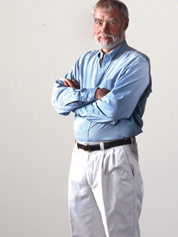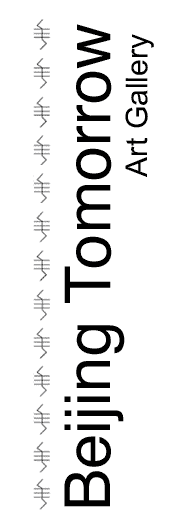 |
Bruce Beasley, born in May 20th 1939, is an American master of sculpture and is one of the initiators of the Digital Stone exhibition.
In 1960 when he was 21 years old, he took part in “The Art of Assemblage” exhibition in New York together with Pablo Picasso, Marcel Duchamp, Robert Rauschenberg and David Smith. The Museum of Modern Art in New York then acquired one of his sculptures, making him the youngest artist ever to have his work in the museum’s collection.
In 1963, Beasley was one of the artists representing the United States at the Biennale de Paris where he won the Purchase Prize. In a style typical of Abstract Expressionism, his works focused on space,
rhythm, power and music.
In the late 1960’s he succeeded in inventing a new technique for casting acrylic. His monumental sculpture, “Apolymon“, installed at the state capitol became headline news in the country almost overnight. The media wrote extensively about Beasley’s scientific spirit and capability as well as the compelling crystal effect and the visual beauty of the sculpture.
In the 1980s, Beasley turned his attention to the growing field of computer technology, which made him one of the first sculptors to use computers for design.
From August 2008, on the west of the central axis in the center area of the Beijing Olympic Games, a sculpture by Beasley named “Gathering of the Moons” has been presented to the world. Designed by digital modeling for the Beijing Olympic Games, the sculpture conveys reciprocal spatial relationships and the meaning of reunion. It is composed of intersecting disks of different sizes, and demonstrates his understanding of Chinese poetical history and culture. Another sculpture of his, Dynamic City, was made for Expo Shanghai 2010.
|
|
ARTIST STATEMENT:
I do not see finished sculptures in my head. I feel that I discover them more than I create them. I believe that shape itself has both an intellectual and an emotional relation with mankind. The intellectual language of shape is geometry. The emotional language of shape is sculpture. It is the same with sound. The intellectual language of sound is acoustics while the emotional language of sound is music.
The way I work is to look for relationships of shapes that speak emotionally to me. So I “play” with arrangements of shapes. I start with shapes that alone do not speak to us emotionally. (Just like any single note on the piano is not music) Most of the time the result is banal…no life…no magic. But eventually I stumble on an arrangement of shapes that has a little bit of emotional feeling. I call this the “heartbeat” it isn’t a sculpture yet but something is happening emotionally. Of course when I say, “something emotionally is happening” it is only happening to me. I have no reference other than myself. Once there is some life in an arrangement of shapes, it is like a sculpture is peaking out behind a door and beckoning me to follow it. So I do follow it…. Sometimes it peters out and the ‘heartbeat” dies and
other times I do discover an arrangement of shapes that sings to me. But in any case this process of discovering the sculpture is where the real joy and excitement, as well as fear and frustration, lie. I don’t make sculptures in order to have them; I make sculptures because of the excitement of discovery.
So where does the computer come into this? Computer modeling lets me experiment with arrangements of shapes without the drudgery and distraction of cutting, welding, and grinding metal to see the shapes. Since I don’t see the sculptures in my head before I begin, I need to be able to try lots of arrangements to discover the sculpture. The computer allows the discovery process to be very spontaneous. In effect, I now make my mistakes with electrons instead of with steel or bronze. Being free of material problems is very liberating.
|
|




